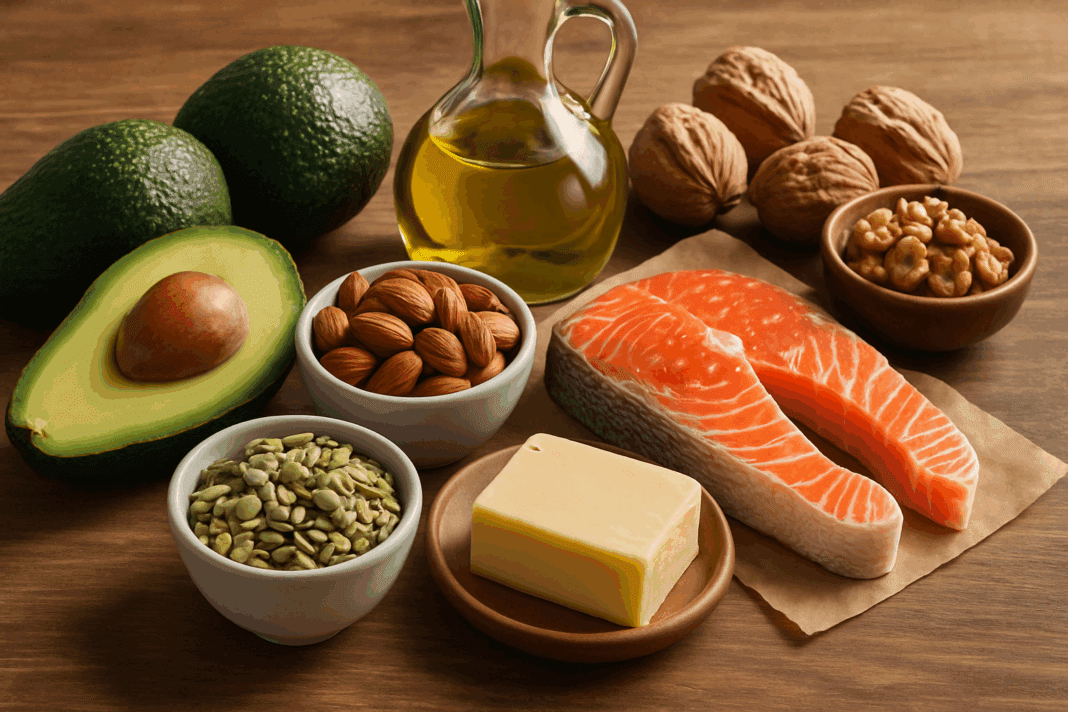In the world of nutrition, fats are often misunderstood and unfairly maligned. Yet, beneath the surface of dietary debate lies a powerful truth: lipids, a category that includes fats and oils, are indispensable to human health. While much attention is placed on reducing saturated fat intake or switching to low-fat alternatives, the broader conversation about the biological and functional role of lipid foods remains underemphasized. Lipids are more than mere calories or culinary enhancers. They are fundamental to life itself. From cell membrane composition to hormone production, lipid-rich foods support a wide array of physiological processes. This article explores why we need lipids in foods, what types are beneficial, how they function in the body, and where to find them in the everyday diet, including familiar examples of lipids like butter and olive oil.
You may also like: Macronutrients vs Micronutrients: What the Simple Definition of Macronutrients Reveals About Your Diet and Health
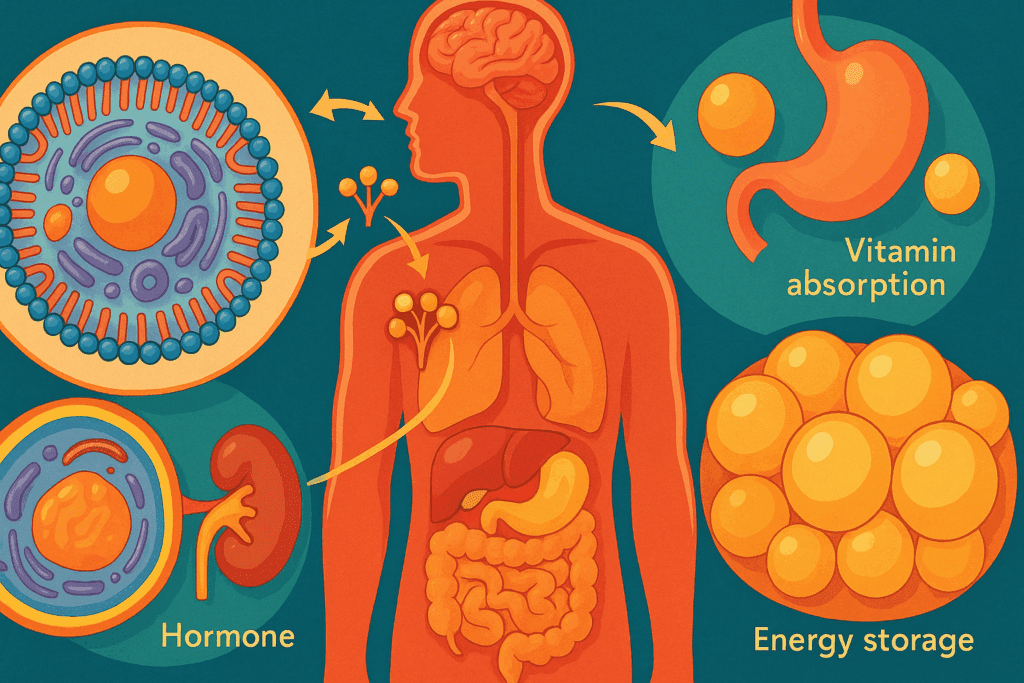
The Biological Importance of Lipids in Human Health
To understand why we need lipid foods, it is important to explore their biological roles within the human body. Lipids serve as a major source of energy, particularly in situations where carbohydrates are not readily available. Stored in adipose tissue, lipids provide more than twice the energy per gram compared to carbohydrates or proteins, making them an efficient energy reserve. However, their significance stretches far beyond mere caloric density. Lipids are essential structural components of all cells, forming the phospholipid bilayer of cell membranes. Without lipids, the integrity and function of cellular membranes would collapse, disrupting nutrient transport, communication, and overall homeostasis.
Lipids also play a critical role in insulation and protection. Subcutaneous fat acts as a thermal insulator, helping the body regulate temperature in cold environments. Additionally, visceral fat cushions vital organs, reducing the risk of mechanical injury. Hormone production represents another vital function. Cholesterol, a lipid molecule often demonized in popular media, is in fact the precursor to steroid hormones such as estrogen, testosterone, and cortisol. These hormones regulate reproductive health, stress responses, and metabolic function. Finally, lipids enable the absorption of fat-soluble vitamins—A, D, E, and K—all of which are crucial for vision, bone health, antioxidant activity, and blood clotting.
Identifying Three Key Reasons We Need Lipids in Foods
To identify three reasons we need lipids in foods is to grasp their far-reaching impact on physical health and biological function. First, lipids are indispensable for nutrient absorption. Without sufficient dietary fat, the body cannot effectively absorb and utilize fat-soluble vitamins. This absorption process takes place in the intestines, where dietary lipids form micelles that transport vitamins through the intestinal lining into the bloodstream.
Second, lipids are crucial for cellular structure and signaling. Phospholipids and cholesterol are central to cell membrane integrity, while certain lipids also act as signaling molecules, mediating inflammation and immune responses. This means that lipids have a direct influence on how cells communicate and respond to their environment, underscoring their role in both development and disease management.
Third, lipids contribute significantly to satiety and palatability. Fat-rich foods are more satisfying, delaying gastric emptying and prolonging feelings of fullness. This can help regulate appetite and support weight management when consumed in appropriate quantities. Furthermore, the texture and flavor-enhancing properties of lipids make meals more enjoyable, encouraging balanced eating habits over time.
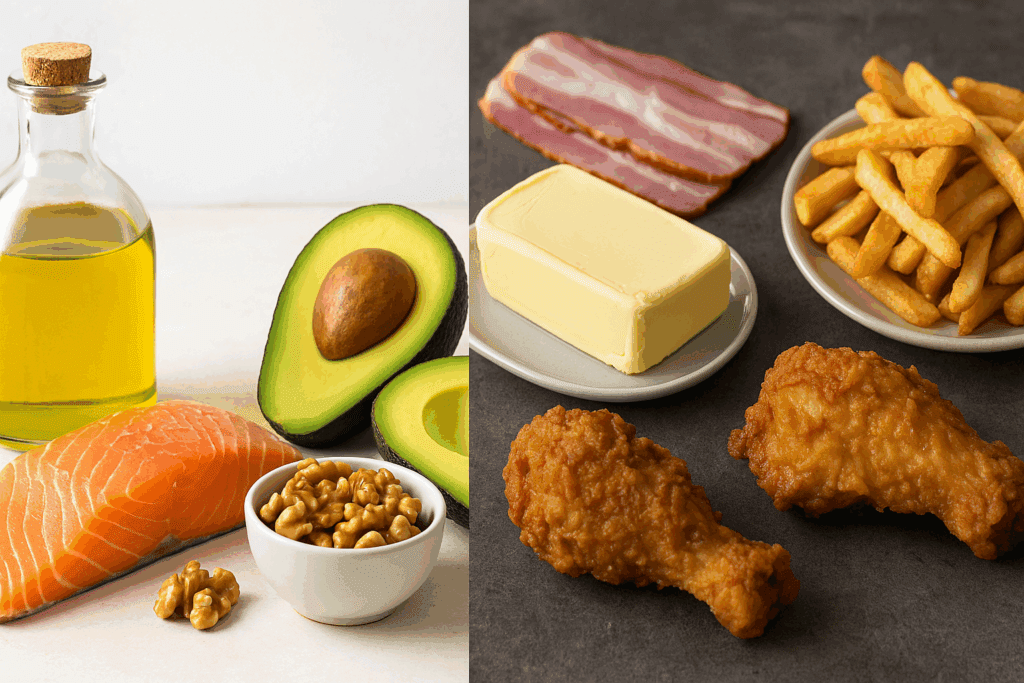
Distinguishing Between Healthy and Unhealthy Fats and Oils
The nutritional value of lipids food depends heavily on the type and source of fat consumed. Not all fats are created equal. Unsaturated fats, found in plant-based oils, nuts, seeds, and fatty fish, are widely regarded as heart-healthy. These include monounsaturated fats (such as those in olive oil and avocados) and polyunsaturated fats (found in flaxseeds, walnuts, and salmon). These fats are known to reduce LDL (“bad”) cholesterol levels and support cardiovascular health.
In contrast, saturated fats—commonly found in red meat, full-fat dairy, and tropical oils like coconut and palm oil—have a more controversial reputation. While moderate intake is not necessarily harmful, excessive consumption is linked to elevated cholesterol and increased risk of cardiovascular disease. Trans fats, however, are universally recognized as harmful. Artificially created during hydrogenation of oils, trans fats raise LDL cholesterol and lower HDL (“good”) cholesterol, contributing significantly to heart disease risk. For this reason, many public health organizations recommend minimizing or eliminating trans fat intake altogether.
Understanding what are some food sources for lipids is a cornerstone of nutritional literacy. By prioritizing sources of unsaturated fats and minimizing harmful varieties, individuals can make informed choices that support long-term wellness.

Common Food Sources That Contain Beneficial Lipids
For those seeking to increase their intake of healthy lipids, a diverse array of foods can provide ample options. Olive oil, a staple of the Mediterranean diet, is rich in monounsaturated fats and antioxidants like polyphenols. Consuming olive oil regularly has been associated with reduced inflammation and improved heart health. Avocados are another excellent source of healthy fats, offering a combination of monounsaturated lipids, fiber, and essential micronutrients like potassium.
Nuts and seeds provide concentrated sources of healthy lipids, especially omega-3 and omega-6 fatty acids. Walnuts, chia seeds, and flaxseeds are notable for their high levels of alpha-linolenic acid (ALA), a plant-based omega-3 fatty acid. Fatty fish such as salmon, mackerel, and sardines are abundant in long-chain omega-3s (EPA and DHA), which play a role in brain function, eye health, and inflammation regulation. Even plant-based sources like soybeans and tofu can contribute valuable lipids to the diet.
Among the most familiar lipid-rich items are examples of lipids like butter and oils. While butter is high in saturated fat, it also contains small amounts of butyrate, a short-chain fatty acid with potential anti-inflammatory benefits. When consumed mindfully and in moderation, butter can be part of a balanced diet, especially when paired with other whole foods. Understanding which food sources to find lipids in, and how they affect health outcomes, empowers consumers to make smarter nutritional decisions.
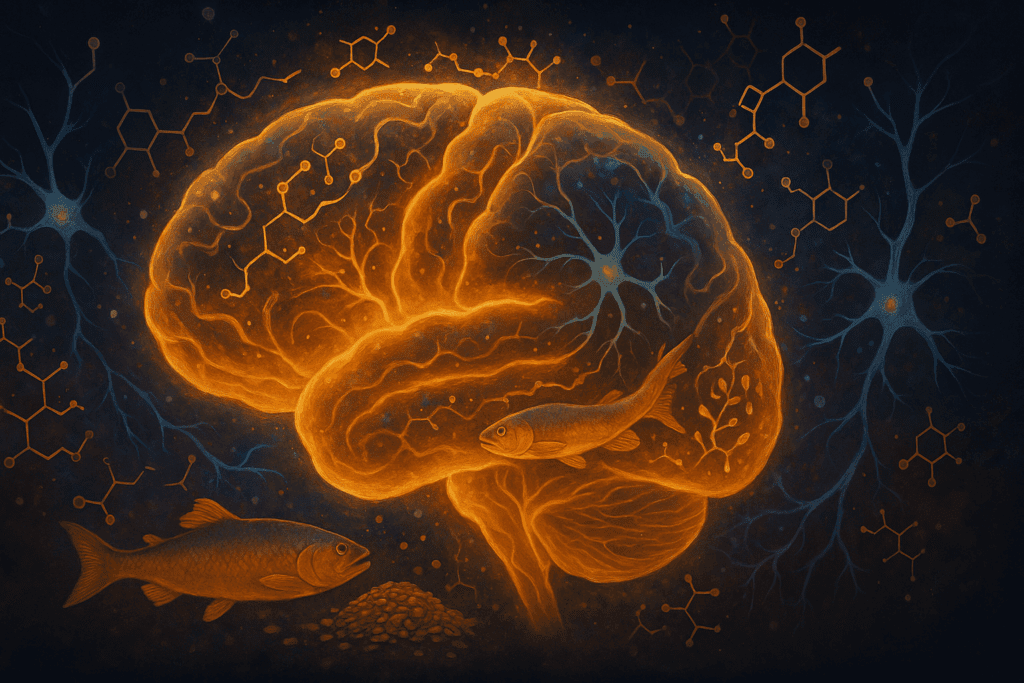
The Role of Lipids in Brain Function and Mental Health
Beyond their physical contributions, lipids play a pivotal role in supporting cognitive function and mental well-being. The human brain is composed of nearly 60% fat, with essential fatty acids forming the backbone of neuronal membranes and synaptic communication. Omega-3 fatty acids, in particular, are integral to brain development and function. Research has linked higher dietary intake of omega-3s with improved memory, reduced risk of cognitive decline, and decreased symptoms of depression.
The significance of lipid foods for mental health extends to prenatal and early childhood development. Adequate maternal intake of healthy fats during pregnancy is critical for fetal brain development. Similarly, childhood cognitive outcomes are strongly influenced by dietary fat quality. DHA, a long-chain omega-3 fatty acid, accumulates rapidly in the developing brain and retina, making it essential during infancy and early childhood.
In adults, lipid intake continues to influence neurotransmitter activity and neuroplasticity. Deficiencies in omega-3 fatty acids have been associated with mood disorders, including anxiety and major depressive disorder. Therefore, ensuring that diets include foods that have lipids—especially those rich in essential fatty acids—is not merely a dietary recommendation but a key strategy for promoting mental resilience and psychological well-being.
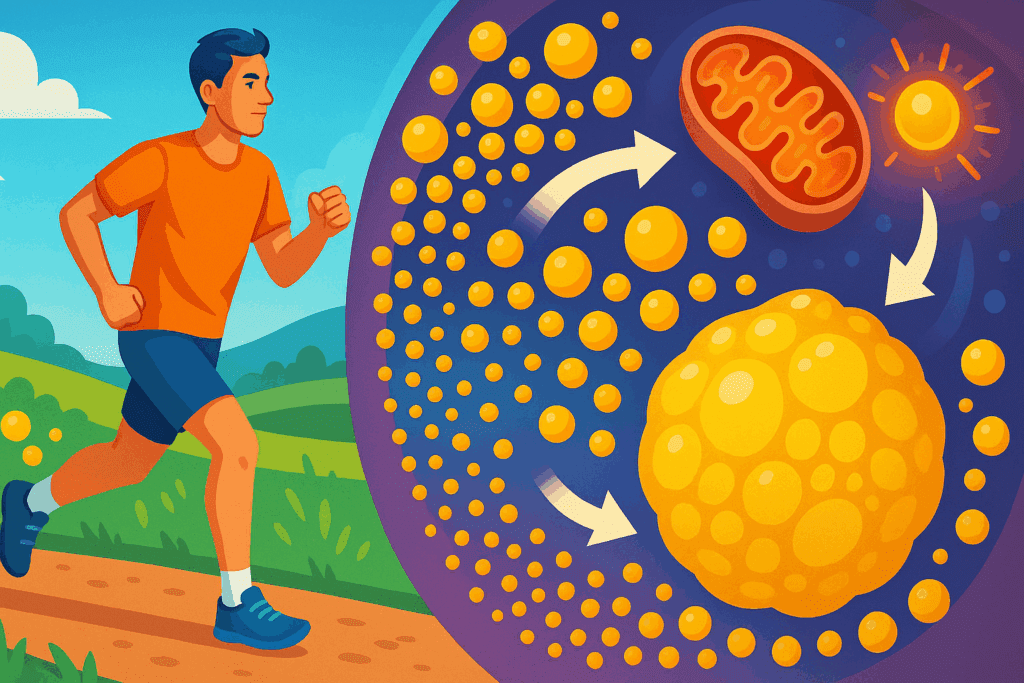
Metabolism, Energy Balance, and Lipids as Fuel
Lipids serve as the body’s most concentrated form of energy. Each gram of fat yields approximately nine calories, compared to four calories per gram from carbohydrates or proteins. This energy density makes lipids indispensable during periods of fasting, illness, or physical exertion. When the body runs low on readily available glucose, it turns to stored fat for fuel through a process known as beta-oxidation.
This metabolic flexibility is particularly important for endurance athletes and individuals engaging in extended physical activity. The ability to efficiently metabolize fat allows the body to preserve glycogen stores and maintain performance over long durations. Lipids also contribute to the thermic effect of food, influencing how much energy the body expends during digestion and nutrient processing.
From a weight management perspective, dietary fat has been shown to promote satiety more effectively than carbohydrates. While fats are calorically dense, they are also slower to digest, which can help reduce overall caloric intake when included mindfully in meals. Thus, understanding the role of lipid foods in energy regulation can help individuals align their eating habits with metabolic needs and personal health goals.
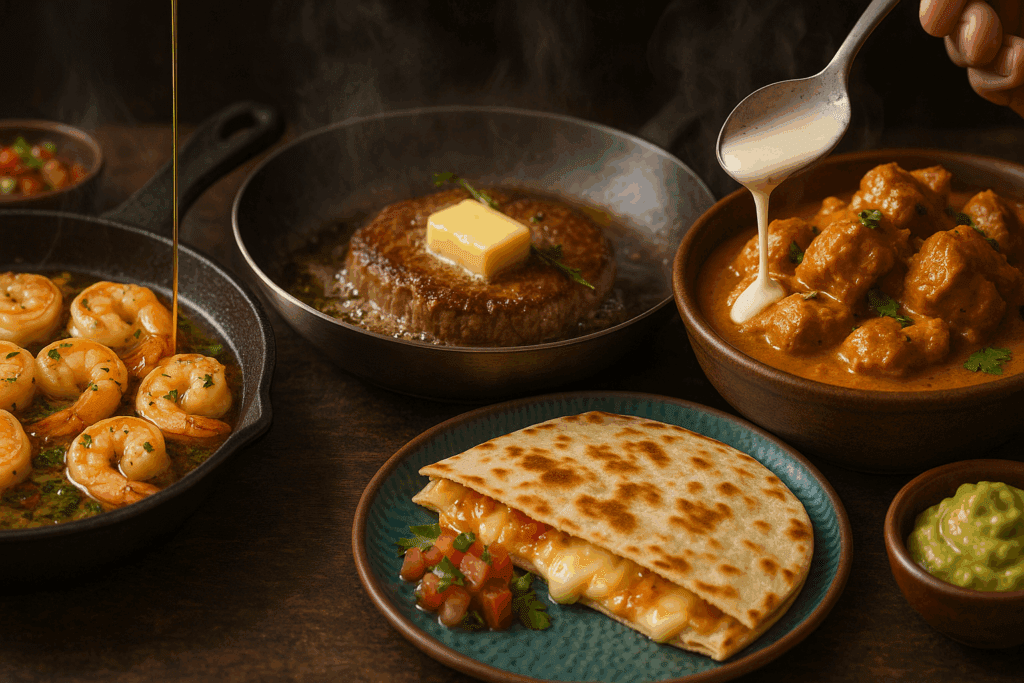
Culinary Applications and the Appeal of Lipid Foods
Lipids are not only functional nutrients but also essential culinary components. They impart richness, texture, and mouthfeel to food in a way that no other macronutrient can replicate. Butter, oils, cream, and animal fats have long been prized for their ability to carry flavors and create desirable food textures. From baking flaky pastries to sautéing vegetables, lipids enhance the sensory appeal of meals and elevate the eating experience.
Examples of lipids like butter illustrate this dual function well. Butter provides structure to baked goods, adds richness to sauces, and creates the golden crust that defines perfectly cooked pancakes. Oils, including olive, sesame, and avocado oil, offer both flavor and high heat tolerance, making them versatile options for cooking and dressings alike.
These attributes explain why many traditional diets feature lipid-rich foods. Whether it’s ghee in Indian cuisine, lard in Latin American dishes, or olive oil in Mediterranean fare, these ingredients are integral to cultural identity and culinary tradition. Recognizing the value of food that contains lipids encourages a more nuanced understanding of nutrition, where pleasure and health are not mutually exclusive.
Exploring Lipids Through a Modern Nutritional Lens
Contemporary nutritional science continues to evolve, shedding light on the complex relationships between fats and health. Emerging research on lipid metabolism, inflammation, and gut health is redefining the role of fats in chronic disease prevention. For example, certain unsaturated fats have been found to modulate the gut microbiome, influencing everything from digestion to immune function. This underscores the importance of understanding what are some food sources for lipids in the context of overall dietary patterns rather than isolated intake.
Furthermore, personalized nutrition is opening new frontiers in dietary fat recommendations. Genetic variations can influence how individuals metabolize and respond to specific types of fats. For some, a higher intake of monounsaturated fats may be protective against cardiovascular disease, while others may benefit more from omega-3 supplementation. These insights are driving the shift toward individualized nutrition plans that incorporate lipid food sources based on genetic and lifestyle factors.
Even in clinical settings, the therapeutic use of lipids is gaining recognition. Ketogenic diets, which emphasize high fat and very low carbohydrate intake, have demonstrated effectiveness in managing epilepsy, particularly in drug-resistant pediatric cases. They are also being investigated for their potential role in neurological conditions such as Alzheimer’s disease and Parkinson’s disease. This growing body of evidence reinforces the idea that lipids are not only necessary but can be used strategically to promote health.
Misconceptions About Lipids and Public Health Messaging
Despite the mounting evidence in favor of healthy fats, public perception remains mixed. Decades of low-fat diet messaging, influenced by early epidemiological studies, left many consumers wary of dietary fat altogether. This has led to an overreliance on low-fat processed foods, many of which are high in sugar and lacking in nutritional value. Clarifying the distinction between healthy and unhealthy fats is essential to rebuilding trust in lipid-rich foods.
The demonization of fat also contributed to nutritional deficiencies, particularly in fat-soluble vitamins. In attempting to reduce total fat intake, many individuals inadvertently cut out foods that have lipids and are rich in essential nutrients. Today, public health campaigns are working to rectify this narrative, promoting balanced diets that include high-quality fats in appropriate portions.
Nutrition education must therefore emphasize the diversity of lipid foods and their roles in promoting wellness. Instead of vilifying fat as a monolithic threat, a more accurate and empowering approach involves guiding individuals toward nutrient-dense sources. These include examples of lipids like butter when used mindfully, as well as an array of plant-based oils and omega-3-rich seafood. Shifting the conversation from restriction to inclusion can foster healthier eating behaviors across populations.
Frequently Asked Questions: Lipids in Foods and Their Role in Human Health
1. Can consuming too many lipid foods be harmful, even if they’re from healthy sources?
Yes, while lipid foods such as olive oil, avocados, and nuts offer numerous health benefits, excessive intake can still lead to unintended consequences. Even healthy fats are calorie-dense, and consistent overconsumption may contribute to weight gain if not balanced with overall energy needs. This doesn’t diminish their value but highlights the importance of portion awareness. It’s also worth noting that an overly high intake of polyunsaturated fats can sometimes displace other essential nutrients, potentially leading to imbalances in omega-3 and omega-6 fatty acids. Thus, moderation and dietary diversity remain key when incorporating foods that have lipids, even when they are considered beneficial.
2. Are there differences in how plant-based and animal-based lipid foods impact our health?
Absolutely. Plant-based lipid foods such as flaxseeds, chia seeds, and olive oil generally contain higher levels of unsaturated fats, which are associated with improved heart health and anti-inflammatory effects. In contrast, animal-based fats like those found in butter, lard, and fatty cuts of meat tend to contain more saturated fats, which can raise LDL cholesterol when consumed in excess. However, context matters—some examples of lipids like butter can still be used in small amounts as part of a nutrient-dense diet. The health impact of a food that contains lipids also depends on preparation methods and accompanying ingredients. A grilled salmon fillet offers more health advantages than a deep-fried breaded chicken wing, despite both being lipid sources.
3. How do cultural food practices influence the intake of fats and oils around the world?
Different cultures approach fats and oils uniquely, often aligning with the availability of local resources. For instance, the Mediterranean diet emphasizes olive oil as a staple, contributing to lower rates of cardiovascular disease in that region. In South Asian cuisine, ghee—an example of a lipid food derived from clarified butter—plays a central culinary role and is revered in Ayurvedic medicine. Indigenous Arctic communities traditionally relied on whale blubber and fish oils as primary lipid sources, supporting both warmth and energy in cold climates. These diverse examples of lipids like butter and oil reflect how cultural practices shape lipid intake, with varying health outcomes depending on the balance of foods that have lipids within the full dietary pattern.
4. Can people on low-fat diets still get enough of the essential fats their bodies need?
It’s possible but challenging. Low-fat diets often aim to reduce caloric intake or lower cholesterol, but if not carefully planned, they may limit the intake of essential fatty acids like omega-3s and omega-6s. These nutrients are found in certain lipid foods such as flaxseeds, walnuts, and fatty fish and cannot be synthesized by the human body. To ensure adequate intake, individuals following a low-fat regimen must include small but strategic portions of food sources to find lipids in, such as a tablespoon of flax oil or a few servings of oily fish each week. Without these targeted inclusions, a low-fat diet risks leading to deficiencies that can affect skin health, brain function, and hormonal balance.
5. How do lipid foods interact with other nutrients in the digestive system?
Lipids play a synergistic role in nutrient absorption, especially for fat-soluble vitamins such as A, D, E, and K. When consumed alongside vegetables or other micronutrient-rich foods, fats and oils help facilitate the transport of these vitamins into the bloodstream. For example, adding avocado or olive oil to a spinach salad significantly improves the bioavailability of its nutrients. Moreover, lipids delay gastric emptying, helping to modulate blood sugar responses when eaten with carbohydrates. These interactions highlight how foods that have lipids can enhance the nutritional value of meals beyond their caloric contribution, serving a functional role in digestion and nutrient synergy.
6. Are there any innovations in the food industry using lipids for health or sustainability?
Yes, the food industry is increasingly exploring novel applications of lipid foods for both health optimization and environmental sustainability. One area of innovation includes the development of structured lipids, which are engineered to improve absorption or offer specific health outcomes, such as medium-chain triglycerides (MCTs) used for brain energy in ketogenic diets. Another trend involves replacing trans fats in processed foods with healthier plant-based oils, improving public health outcomes. Companies are also investing in algae-derived oils as a sustainable alternative to fish-based omega-3s. These new food products are not only rich in examples of lipids like butter alternatives but are also aimed at reducing the ecological footprint while preserving the health benefits associated with lipids food.
7. What are some overlooked food sources that contain lipids but aren’t commonly discussed?
While common lipid-rich foods like nuts, seeds, and oils are widely known, there are several less obvious sources worth mentioning. For instance, egg yolks are an underrated source of lipids, including phospholipids that support brain health. Full-fat yogurt and cheese, though often limited in low-fat diets, also provide beneficial saturated fats and fat-soluble vitamins. Edamame and soy-based products contain both protein and lipid content, making them valuable plant-based options. Even some whole grains, like oats and quinoa, offer small amounts of healthy fats that contribute to overall intake. By diversifying food sources to find lipids in unexpected places, individuals can meet their nutritional needs more effectively.
8. Can lipid intake affect skin health and appearance?
Yes, the connection between lipid consumption and skin health is well-documented. Essential fatty acids, especially omega-3s and omega-6s, help maintain the skin’s lipid barrier, which keeps it hydrated, elastic, and resilient to environmental stressors. Deficiencies in lipid foods have been linked to dry skin, dermatitis, and premature aging. Consuming a balanced mix of fats and oils from both plant and animal sources can support collagen production and reduce inflammation, improving overall complexion. Lipids examples food like fatty fish, nuts, and seeds not only nourish from within but also enhance the skin’s capacity to retain moisture and repair damage.
9. How should individuals with specific health conditions approach lipid consumption?
For individuals with conditions such as cardiovascular disease, diabetes, or pancreatitis, the approach to lipid intake must be personalized and closely monitored. Those managing heart disease may benefit from emphasizing monounsaturated and polyunsaturated fats while limiting saturated and trans fats. Diabetics should consider the impact of lipid foods on insulin sensitivity and weight management, often opting for nutrient-dense fats like avocado and olive oil. Individuals with pancreatitis may need to restrict fat intake altogether during flare-ups and transition to a low-fat diet during recovery. Collaborating with a registered dietitian can help tailor lipid consumption based on specific health needs, ensuring that food contain lipids in a way that aligns with medical goals and symptom management.
10. Why is it important to teach children about fats and oils in a positive light?
Children are often exposed to conflicting messages about fat, with many health campaigns historically focusing on reduction without distinguishing between healthy and unhealthy types. Early education about lipid foods, including how they support growth, brain development, and energy, can foster a lifelong understanding of balanced nutrition. Teaching kids to identify 3 reasons we need lipids in foods—such as vitamin absorption, brain health, and hormonal function—can encourage more mindful eating. Providing practical examples of lipids like butter, nuts, and avocado helps demystify fat as a food group and cultivates a healthier relationship with food. This foundation can empower future generations to make informed, confident dietary choices rooted in science rather than diet culture myths.
Conclusion: Embracing the Vital Role of Lipid Foods in Health and Wellness
Understanding the value of lipid foods is critical not only for individual well-being but for advancing public health at large. These fats and oils do far more than add flavor and texture to our meals. They are biologically essential, intricately tied to energy production, cellular health, nutrient absorption, hormone synthesis, and cognitive function. From examples of lipids like butter and olive oil to omega-3-rich fish and nuts, the diversity of food that contains lipids offers both nutritional depth and culinary richness.
To identify three reasons we need lipids in foods is to understand that they are not just energy sources but enablers of life itself. Their importance in maintaining cellular structures, supporting vitamin absorption, and regulating satiety places them among the most vital components of a balanced diet. When we examine what are some food sources for lipids, we discover a wide array of nourishing options that align with both health goals and cultural traditions.
As we continue to debunk outdated myths and reframe the narrative around dietary fats, it becomes clear that food sources to find lipids in are not to be avoided, but embraced with knowledge and intention. A diet that incorporates healthy fats—including lipids examples food like avocado, nuts, and even moderate amounts of butter—can be both satisfying and life-sustaining. In this way, lipids offer a bridge between tradition and science, pleasure and health, simplicity and complexity. Their rightful place in our meals reflects not only nutritional wisdom but an appreciation for the essential role they play in the story of human nourishment.
Further Reading:
What Foods Are Lipids Found In?
7 Types of Foods That Contain Lipids (and Which to Limit)


